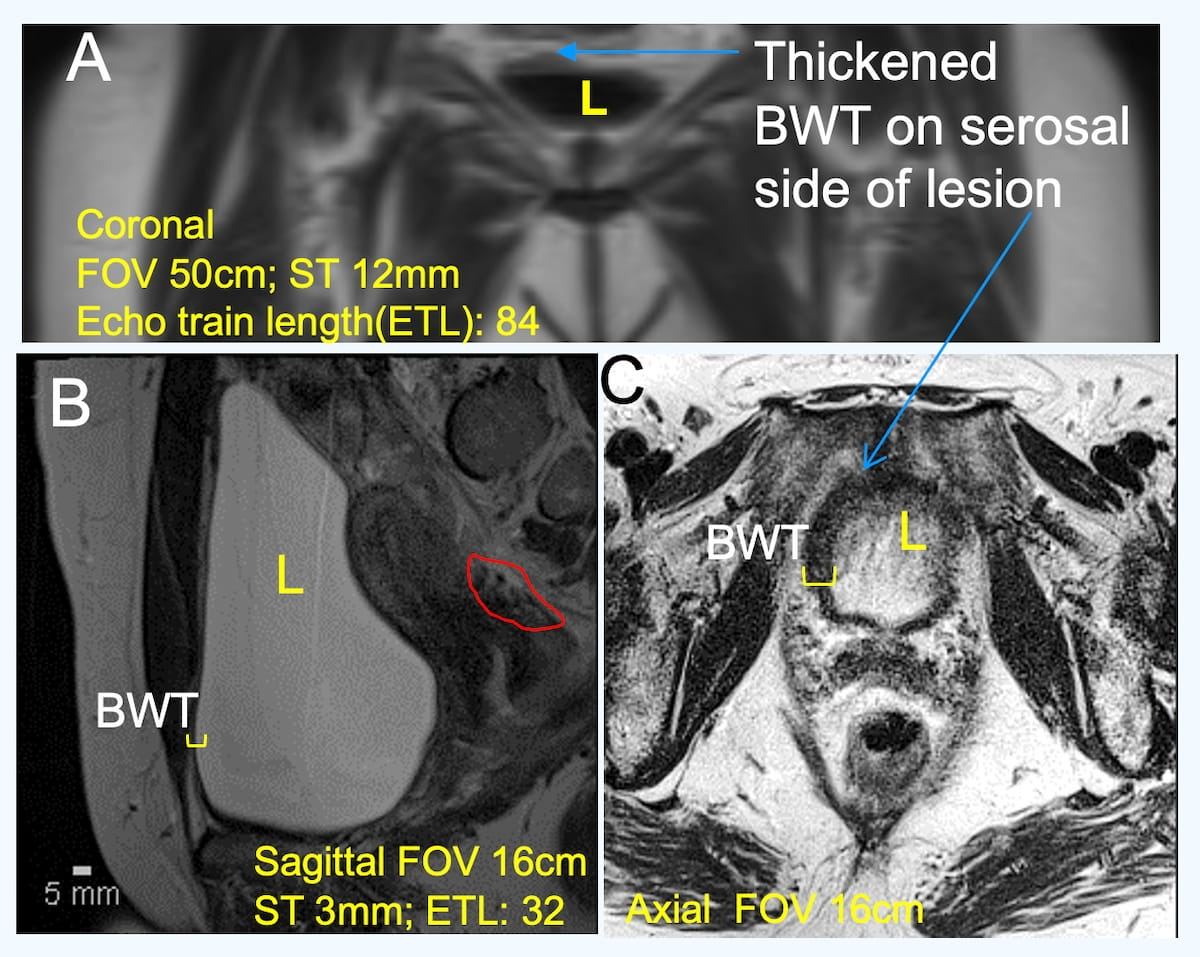New Research Highlights Emerging MRI Contrast Agent for Bladder Imaging
A new MRI contrast agent may provide a viable non-invasive alternative for the detection of interstitial cystitis, according to preliminary research presented at the 5th International Consultation on Interstitial Cystitis Japan (ICICJ) in Kyoto, Japan.
Through intravesical contrast-enhanced MRI (ICE-MRI), the dual-component MRI contrast agent LP-20 facilitated enhanced phenotyping differentiation between bladder-centric interstitial cystitis (IC) and endometriosis, according to preliminary research presented at the 5th International Consultation on Interstitial Cystitis Japan (ICICJ) in Kyoto, Japan.
Researchers found that T1- and T2-weighted ICE-MRI images with LP-20 (Lipella Pharmaceuticals) enabled a wider field of view for pelvic abnormalities as well as visualization of sub-surface lesion depth and wall thickening on the serosal side of the bladder that one cannot see via cystoscopy.
The images reveal greater than 7 mm of bladder wall thickening and luminal side trabeculations for a 69-year-old patient with a urethelial lesion (A and C). A sagittal view for a 35-year-old patient revealed a bladder wall less than 5 mm in thickness. (Images courtesy of the 5th International Consultation on Interstitial Cystitis Japan (ICICJ)).

Designed for interstitial cystitis detection, the LP-20 agent may also facilitate the diagnosis of bladder pain syndrome (BPS), according to Lipella Pharmaceuticals.
“LP-20 provides a valuable tool for phenotyping IC/BPS, potentially streamlining patient identification for clinical trials and improving timely access to effective treatments,” added lead study author Pradeep Tyagi, M.D., an associate professor in the Department of Urology at the University of Pittsburgh Medical Center.
The company added that LP-20, which has been the subject of completed pre-clinical and proof-of-concept human trial research, can also diagnose the progression of bladder cancer to muscle invasive bladder cancer.
References
1. Chancellor M, Moon CH, Chermansky C, Yoshimura N, Kaufman J, Tyagi P. Size-dependent paracellular diffusion into urothelium is embodied by intravesical contrast enhanced magnetic resonance imaging (ICE-MRI). Presented at the 5th International Consultation on Interstitial Cystitis Japan (ICICJ), August 21-23, Kyoto, Japan.
2. Lipella Pharmaceuticals. Lipella Pharmaceuticals unveils advanced bladder imaging technique at ICICJ conference. BioSpace. Available at https://www.biospace.com/lipella-pharmaceuticals-unveils-advanced-bladder-imaging-technique-at-icicj-conference . Published August 21, 2024. Accessed August 21, 2024.
Can Abbreviated MRI Have an Impact in Rectal Cancer Staging?
April 4th 2025Abbreviated MRI demonstrated a 95.3 percent specificity for rectal cancer and provided strong agreement with the full MRI protocol for T staging and detection of extramural venous invasion, according to newly published research.
Can Photon-Counting CT be an Alternative to MRI for Assessing Liver Fat Fraction?
March 21st 2025Photon-counting CT fat fraction evaluation offered a maximum sensitivity of 81 percent for detecting steatosis and had a 91 percent ICC agreement with MRI proton density fat fraction assessment, according to new prospective research.










